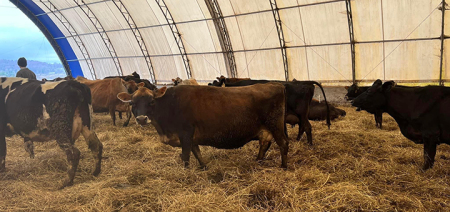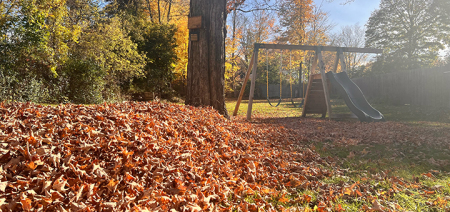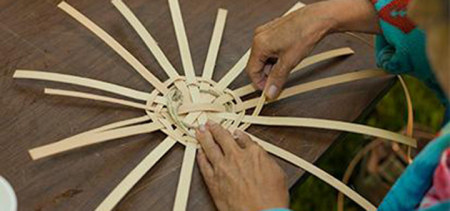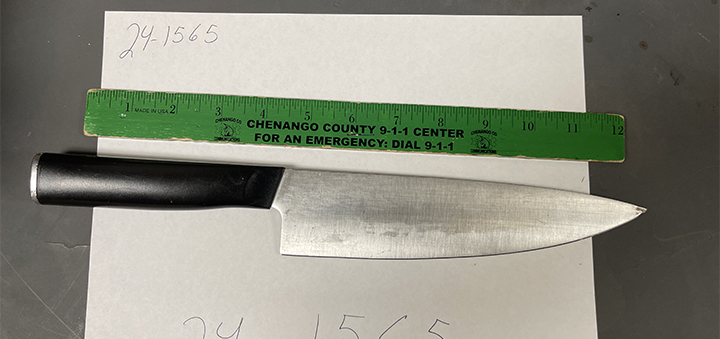Wading Through Waders
Published:
June 16th, 2021
By:
Eric Davis
 Outdoor Columnist Eric Davis
Outdoor Columnist Eric Davis
With the warmer weather here its time to start thinking about spring fishing season. One thing that many people will realize when they go to get their fishing stuff out is that their waders have dry rotted or they are reminded that they had a leak last year before they were put away.
This situation may also apply to waterfowl hunters, trappers, or salmon fishermen who use waders in the fall and winter.
Waders come in two main varieties: hip waders and chest waders. Hip waders are essentially a pair of boots that extended up your legs to your thighs. There are two separate boots, one for each leg. Hip waders most commonly are made of rubber or PVC. Hip waders are less expensive than chest waders, making them popular for budget-minded consumers.
For many shallow streams, hip waders are the right height to keep the user dry. Hip waders also weight less than chest waders and are easier to put on and take off.
Chest waders are like a combination of boots, pants and the bottom of a shirt all sewn together and waterproof. Chest waders are a one-piece unit, and are commonly made of neoprene, PVC, or nylon with a Gore-Tex membrane. You can get chest waders that have insulation built into the boot for added warmth along with fleece lining on the inside of the waders. Chest waders can also come in stocking-foot styles where you put a wading shoe or boot over the sock or stocking type foot of the wader.
Being able to change the wading show allows you to match the sole of the shoe to the bottom you are walking on. Breathable waders have become very popular among fly fishermen who are fishing in the summer months when neoprene waders would cause you sweat heavily. These waders allow perspiration and some heat to escape out of the waders without letting any water in.
Breathable waders are also extremely lightweight making them easy to maneuver in. Chest waders are more expensive than hip waders but provide coverage in deeper water and added warmth by having your core inside of the waders instead of out in the elements.
When it comes to waders, just like with regular shoes, the sole of the boot can vary wildly. Felt soles have long been the choice when fishing on slick bottoms.
Lately, felt soles have become a target in the fight against aquatic invasive species (AIS) as the felt can trap micro-organisms that can be introduced into a different body of water. Rubber soles would be the common sole style for boot-foot chest waders. Rubber soles are good for use in muddy or swampy bottoms but can have bad traction on slick flat rocks. Studded soles are just like studded tires, they have small metal studs protruding from them so they can grip on smooth surfaces better. There are studded rubber soles and studded felt soles available. Studded rubber soles could be used in place of traditional felt sole boots as they will provide grip on slick rocks and slimy bottoms. However, studded soles are difficult to clean after use in muddy bottoms.
Once you have your waders, there are a few other pieces of gear that can come in very handy. When using chest waders, if you go too deep and water comes over the top of the waders, they can fill quickly and pull you under water. Use a wading belt, which is cinched around your waist, to limit the amount of water that can get into the waders. Just like with hunting boots, what socks you wear with your waders can make a big difference.
Do not use cotton socks as they will lose any insulation value if they become wet, and your feet will almost always get wet from sweat in waders. Socks with a high amount of wool will keep their insulation value even when they get wet. Whenever you are done with your waders, you should store them properly. The first step is to dry them out completely on the inside. Use a boot dryer with added wader extensions to dry to boot part of the waders out.
Then hang the waders so they outside will dry. Hang the waders by the boot, not by the top, to avoid stretching the material of the waders out by dangling the heavy boot section. You can buy a boot hanger for under ten bucks and it will make your waders last longer.
Author: Eric Davis - More From This Author
Comments





(1).jpg)

